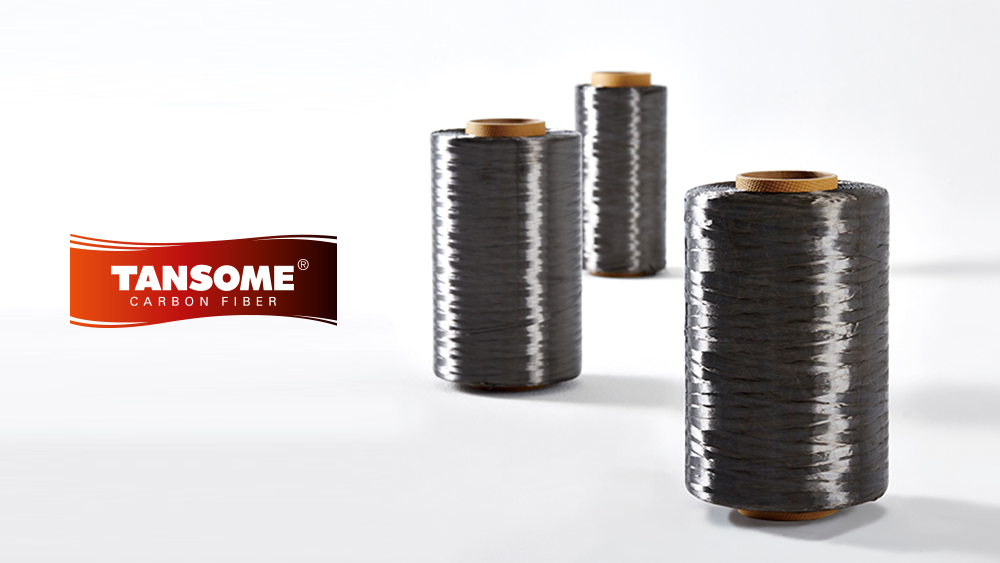Brand Journalism
Brand Journalism
2023-02-10
TANSOME®, a Special Fiber That Gets Stronger as It Burns

The first carbon fiber developed in Korea and fourth of its kind in the world
A single carbon fiber of 7μm diameter is only one-tenth the diameter of a human hair. However, when combined together in large numbers as many as several thousand, it is reinforced to withstand any pressure. A very thin layer of carbon fiber of 1㎟ cross sectional area in turn can lift up a 700kg vehicle.
Committed to technology innovation and the environment, Hyosung Advanced Materials has begun its endeavor of developing carbon fiber since 2008. It has developed Korea’s first high-performance carbon fiber TANSOME® in 2011 to succeed in mass production in 2013. TANSOME® actually is an acronym of two words: “Tanning” and “Something Special” which carries the meaning of creating added values with the very special material in a way that has never been seen before.
With promise of limitless potentials
Carbon fiber is extensively applied to a wide range of areas. Space, automobile, wind power, high-pressure container, electric wire layers, engineering and construction, other industrial purposes and sports and leisure. With technological advances, more and more sectors require lighter, stronger, more sophisticated composites. There is nothing better that suits this profile than Hyosung’s carbon fiber.

Carbon fiber has long been part of the production of space shuttles. Airplane manufacturing makers such as Boeing and Airbus have been increasingly adopting carbon fiber composites in the airplane manufacturing process (e.g., B787 and A380) in order to lower the overall airplane weight and enhance energy efficiency. The automobile industry, especially race cars that require lightweight and high motor fuel efficiency is also no exception. Oil transport pipelines which require chemical and corrosion resistance also use carbon fiber. Frames of yacht and vessels, high-pressure containers such as CNC and hydrogen tanks, bridge panels and beams for civil engineering and construction, and medical equipment. The list goes on. In sports and leisure industry, carbon fiber is extensively used in areas such as golf club, bikes, hockey stick, tennis racket, fishing rod, and snowboard. Cable core made of carbon fiber exhibits greater elasticity and strength than that of steel core, rendering a wider row spacing of transmission towers to save up costs.
The indispensable part of hydrogen value chain
That’s not the end of the story. Carbon fiber shines the most in hydrogen industry. Having recognized limitless potentials of hydrogen, Hyosung has actively engaged in related industries. The company is running the largest number of hydrogen filling stations in Korea while providing core parts in high-temperature tanks for safe storage and transportation of hydrogen. It has also been leading the distribution of green hydrogen produced using renewable electricity such as wind and solar power. Hyosung is building the world's largest liquid hydrogen plant for storage and utilization of green hydrogen. It is also developing coal and carbon capture and utilization (CCCU) technologies which will be critical in the production of blue hydrogen.
The indispensable part of Hyosung’s hydrogen value chain is TANSOME®. Liquefied hydrogen in filling stations that are the key infrastructure of hydrogen mobility is compressed in high pressure for the sake of easier transport and storage. It requires high-strength tanks and this is where TANSOME® comes in handy. High-pressure tanks and containers made of TANSOME® are significantly lighter than existing materials, boosting fuel efficiency and reducing greenhouse gas emission.

Hyosung, committed to both of hydrogen and carbon fiber
With its proprietary technology of carbon fiber, Hyosung Advanced Materials has committed itself to sustainability. It plans to gradually expand its TANSOME® production capacity to 9,000 tons/year by 2023 and the world’s largest capacity of 24,000 tons/year by 2028. Hyosung is also to build a carbon industry cluster and further expand the adoption of the eco-friendly carbon fiber. A future where we can meet carbon fiber in everyday life seems not far away.